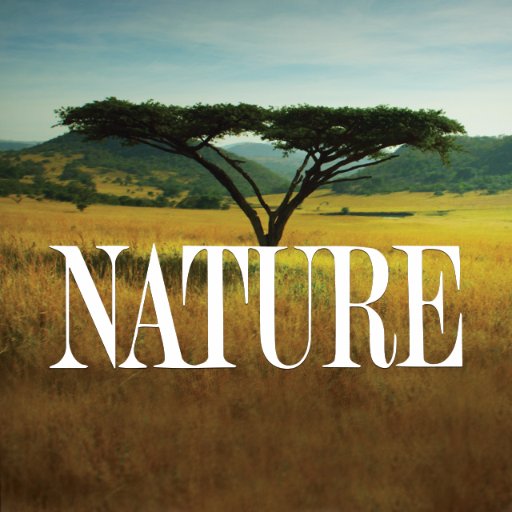
New York Botanical Garden
@NYBG
Followers
52K
Following
3K
Media
5K
Statuses
18K
A museum of plants 🌱, a center for learning 📚, and a plant science leader in the Bronx 🔬
Bronx, NY
Joined December 2008
In Nepal, Dr. Kate Armstrong is working with @GreenhoodNepal to develop cultivation protocols for wild medicinal plants threatened by overharvesting, and not currently in cultivation. Stay tuned for more as the project unfolds!
1
7
20
When dead trees fall, they move more than carbon. Other nutrients like nitrogen and phosphorous move into and out of deadwood more quickly than expected, as shown by NYBG Curator and coauthors in a paper just published in . https://t.co/jxH91OkTfx
nph.onlinelibrary.wiley.com
Deadwood represents globally important carbon (C), nitrogen (N), and phosphorus (P) pools. Current wood nutrient dynamics models are extensions of those developed for leaf litter decomposition....
0
5
13
In our home of NYC, nature meets the holidays at the @NYBG Holiday Train Show! We love the festive display of twinkling, plant-based replicas of New York's iconic architecture. Do you have any favorite holiday activities in your city?
2
15
34
On 12/8 we welcomed Bronx residents for our Bronx Community Partner Day, featuring free access to the Holiday Train Show. Our thanks to our attending representatives, the Bella Voce Choir, and everyone who supported our festive Holiday Tree and Menorah Lighting ceremonies!
1
3
13
In a new post on @CarbonBrief, join Dr. Eve Beaury, an Assistant Curator at NYBG, to explore how land use practices designed to tackle climate change may sometimes be at cross purposes—and the choices we face as a result.
carbonbrief.org
Our research, published in Global Change Biology, assesses opportunity costs among 19 different land-use strategies for climate mitigation.
1
0
1
In a recent publication in @PLOSONE, Drs. Mike Balick, Gregory Plunkett, and K. David Harrison document the multifaceted role that the sun plays in the lives and beliefs of the people of Tanna, Vanuatu: https://t.co/BH8NBQsMnK
#NYBGScience
1
1
4
Carbon sequestration is a powerful tool in the fight against climate change, but what's the most effective way to use land to store carbon? NYBG scientist Evelyn Beaury weighs in in a guest post for CarbonBrief:
carbonbrief.org
Our research, published in Global Change Biology, assesses opportunity costs among 19 different land-use strategies for climate mitigation.
0
3
6
Entada phaseoloides has traditionally been used as a source of rope & medicine in Vanuatu. This +851 other species are described in the forthcoming book, Plants, People and Culture in Tafea Province, Vanuatu, based on 10 years of fieldwork. Stay tuned! #NYBGScience 🍃
0
2
10
New #scipub by Mike Balick, Greg Plunkett, et al. on daylight, culture, & plants on Tanna Island Vanuatu. Local legends say that Syzygium malaccense was created to illuminate a dark world through its light stamens. Article --> https://t.co/0BVxRroW6I
#NYBGScience #DaylightAcademy
0
2
12
In the latest update from @NPRShortWave, a science podcast from National Public Radio, hear from NYBG Assistant Curator Aleca Borsuk as she discusses the fascinating details of plant growth during the show's 5th-anniversary episode.
npr.org
In honor of our show turning 5 (!!) today... 5 Short Wave staffersanswer 5(x2) questionsfrom some of our 5-year-old listenersand explain the science ... like they're 5. SPOILER ALERT: The questions...
0
0
2
From #COP16, hear from NYBG CEO Jennifer Bernstein, Chief Science Officer @mauriciodiazgra, and representatives of the Nariño Department of Colombia as they discuss the vast beauty and biodiversity of the territory—and its broader significance.
1
0
1
Among the huge number of items in our Mertz Library archives, there are always surprises waiting to be discovered. Hear from Stephen Sinon, our Curator of Special Collections, Research, and Archives, on a recent find from botanical history.
nybg.org
A recent discovery in the backlog of the Mertz Library’s botanical artwork collection has proven to be an interesting addition to our holdings of original artwork created for the Flora Brasiliensis.
0
2
3
It’s been a busy past two weeks in Cali, Colombia, as our scientists took part in #COP16, and we’re back with a recap of this important event. 🌎 Check out a rundown of the forward-looking, collaborative work done:
nybg.org
“The scientists at The New York Botanical Garden look to plants for the answers in advancing real-world solutions around conservation, restoration, land use, regenerative agriculture, and plants,...
0
3
3
We’re proud to announce we’ve signed an agreement with @AgendaCAF—the Development Bank of Latin America and the Caribbean—to develop research on biodiversity, promote restoration strategies, and more. Learn more about this partnership from #COP16: https://t.co/yOK1OqRA1U
0
6
8
Since the 2016 peace accord that mitigated hostilities between rebels and military forces in Colombia, many regions have reopened to researchers—and a number of new species discoveries have resulted. Learn more as #COP16 continues:
reuters.com
For more than five decades as violent conflict raged through Colombia's highlands and rainforests, wildlife thrived.
0
3
7
If you're on-site in Cali for #COP16 this coming Monday, October 28, don't miss the #NYBGScience team's talk on using plant-based solutions to address the climate and biodiversity crises, kicking off at 9 a.m. at the Jardín Botánico de Cali. RSVP here: https://t.co/7BhCypokrW
1
2
8
Snapshots from our NYBG Science team's first days in Cali, Colombia for the UN's #COP16 biodiversity conference! For the first arrivals flying in on October 21, the natural beauty of Colombia—one of the most biodiverse places on Earth—was vast and clear from the air.
0
3
9
NYBG's Mike Balick & Dr. Stephen Dahmer taught a botanical medicine class at the Andrew Weil Center for Integrative Medicine, University of Arizona, discussing the history of the field and featuring one of the Mertz Library's oldest specimens: Circa Instans! #NYBGscience
0
1
1
#NYBGScience welcomed three collaborators on the Traditional Grain Mixtures Project from Ethiopia: Dr. Asmare Dejen, Dr. Endale Amare, and Prof. Zemede Asfaw. Exciting collaborations ahead to support traditional farming practices and enhance climate resilience!
0
2
6
🎉 Congrats to Dr. Makenzie Mabry, named University of Florida Postdoc of the Year! Co-advised by Alex McAlvay (NYBG) & Doug & Pam Soltis (Florida Museum/UF), she stood out among 700+ postdocs. Amazing achievement! 👏 more info here ---> https://t.co/kfX8CoH0Ta
#NYBGscience
1
5
20





